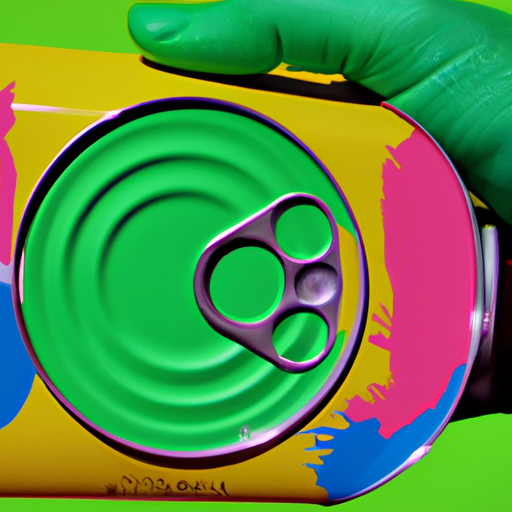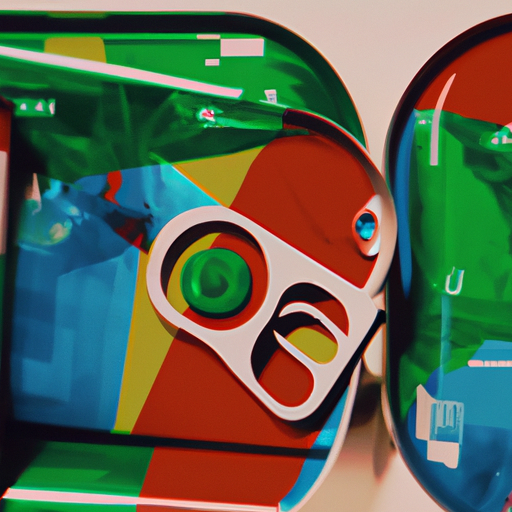
-
Table of Contents
- Eco-Friendly Packaging Innovations: A Greener Tomorrow
- The Environmental Impact of Traditional Packaging
- Eco-Friendly Packaging Alternatives
- Case Studies: Eco-Friendly Packaging in Action
- 1. Patagonia’s Responsible Packaging Program
- 2. Dell’s Mushroom Packaging
- 3. Lush’s Naked Packaging
- The Benefits of Eco-Friendly Packaging
- Conclusion
Eco-Friendly Packaging Innovations: A Greener Tomorrow

As the world becomes more conscious of the environmental impact of human activities, industries are increasingly seeking ways to reduce their carbon footprint. One area that has gained significant attention is packaging, which plays a crucial role in product delivery and protection. Traditional packaging materials, such as plastic and Styrofoam, have long been associated with environmental degradation. However, innovative eco-friendly packaging solutions are emerging, offering a greener tomorrow. In this article, we will explore some of these packaging innovations and their potential to revolutionize the industry.
The Environmental Impact of Traditional Packaging
Before delving into the eco-friendly alternatives, it is essential to understand the environmental impact of traditional packaging materials. Plastic, for instance, is a major contributor to pollution and waste. According to the United Nations Environment Programme, approximately 8 million tons of plastic end up in the oceans each year, endangering marine life and ecosystems. Moreover, plastic takes hundreds of years to decompose, further exacerbating the problem.
Styrofoam, another commonly used packaging material, is non-biodegradable and poses a significant threat to the environment. It is made from polystyrene, a petroleum-based product that requires large amounts of energy to produce. Styrofoam also contributes to air pollution when incinerated and takes up valuable landfill space when discarded.
Eco-Friendly Packaging Alternatives
Fortunately, innovative companies and researchers are developing eco-friendly packaging alternatives that aim to reduce waste and minimize environmental harm. These alternatives include:
- Biodegradable Packaging: Biodegradable packaging materials are designed to break down naturally over time, reducing their impact on the environment. For example, bioplastics made from renewable resources, such as cornstarch or sugarcane, can be used as an alternative to traditional plastic. These materials decompose much faster than conventional plastics, reducing the risk of pollution and waste accumulation.
- Compostable Packaging: Compostable packaging goes a step further by not only breaking down but also providing valuable nutrients to the soil. These materials are designed to be composted along with organic waste, creating a closed-loop system. For instance, packaging made from plant-based materials like bamboo or bagasse can be composted and used as fertilizer, reducing the need for synthetic fertilizers.
- Recyclable Packaging: Recycling plays a crucial role in reducing waste and conserving resources. Packaging materials that can be easily recycled, such as paper and cardboard, are gaining popularity. Additionally, some companies are exploring innovative recycling technologies, such as chemical recycling, to transform traditionally non-recyclable materials into new products.
- Reusable Packaging: Reusable packaging aims to minimize waste by providing a sustainable alternative to single-use packaging. For example, companies like Loop offer a system where products are delivered in durable containers that can be returned, cleaned, and reused. This approach reduces the need for excessive packaging and encourages a circular economy.
Case Studies: Eco-Friendly Packaging in Action
Several companies have already embraced eco-friendly packaging solutions, setting an example for others to follow. Let’s explore some notable case studies:
1. Patagonia’s Responsible Packaging Program
Outdoor clothing brand Patagonia has long been committed to sustainability. In 2018, they launched their Responsible Packaging Program, aiming to reduce the environmental impact of their packaging. As part of this initiative, Patagonia eliminated plastic bags from their supply chain and replaced them with 100% recycled paper bags. They also introduced biodegradable mailers made from cornstarch, reducing their reliance on traditional plastic packaging materials.
2. Dell’s Mushroom Packaging
Technology company Dell has been at the forefront of sustainable packaging innovation. In collaboration with Ecovative, Dell developed a packaging solution made from mushroom mycelium, the root structure of mushrooms. This packaging material is not only biodegradable but also provides excellent protection for fragile products. Dell estimates that by using mushroom packaging, they have saved over 3.5 million pounds of packaging material since 2009.
3. Lush’s Naked Packaging
Beauty brand Lush has taken a unique approach to reduce packaging waste with their “naked” products. Instead of traditional plastic bottles, Lush offers solid shampoo bars, shower gels, and other cosmetics that are packaging-free or wrapped in biodegradable materials. By eliminating unnecessary packaging, Lush has significantly reduced their environmental impact and inspired other companies to rethink their packaging strategies.
The Benefits of Eco-Friendly Packaging
The adoption of eco-friendly packaging solutions offers numerous benefits for both businesses and the environment. Some of these benefits include:
- Reduced Environmental Impact: Eco-friendly packaging materials help reduce pollution, waste accumulation, and the depletion of natural resources. By choosing sustainable alternatives, businesses can contribute to a healthier planet.
- Enhanced Brand Image: Consumers are increasingly demanding environmentally responsible products. By adopting eco-friendly packaging, businesses can improve their brand image and attract eco-conscious customers.
- Cost Savings: While the initial investment in eco-friendly packaging may be higher, businesses can achieve long-term cost savings. For example, reusable packaging eliminates the need for constant repurchasing, reducing expenses in the long run.
- Regulatory Compliance: Governments around the world are implementing stricter regulations on packaging waste. By proactively adopting eco-friendly packaging, businesses can stay ahead of regulatory requirements and avoid potential penalties.
Conclusion
Eco-friendly packaging innovations offer a promising path towards a greener tomorrow. By replacing traditional packaging materials with biodegradable, compostable, recyclable, and reusable alternatives, businesses can significantly reduce their environmental impact. Case studies from companies like Patagonia, Dell, and Lush demonstrate the feasibility and benefits of adopting eco-friendly packaging solutions. The shift towards sustainable packaging not only benefits the environment but also enhances brand image, reduces costs, and ensures compliance with evolving regulations. As consumers become more conscious of their purchasing decisions, businesses must embrace eco-friendly packaging to stay competitive and contribute to a more sustainable future.
